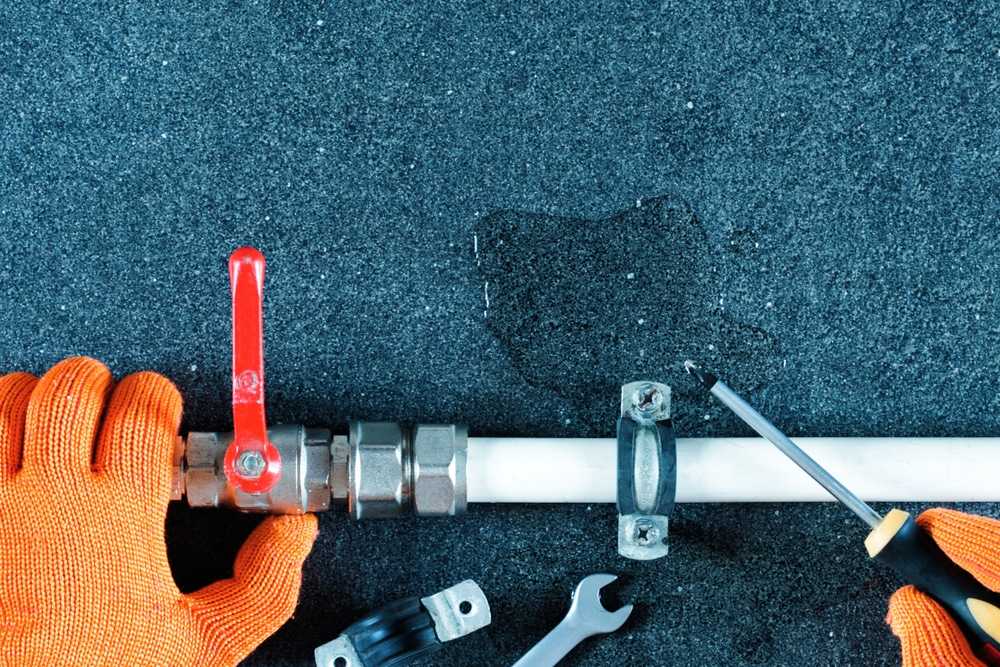Leaky pipes can be a significant headache for homeowners. The constant dripping, the potential for water damage, and the nagging sound can quickly become a source of frustration. While the conventional solution might involve replacing the entire pipe, there are alternative methods that can effectively fix a leaky pipe without resorting to such drastic measures. In this article, we will guide you through various techniques and tips to help you address a leaky pipe issue efficiently and cost-effectively.
Understanding the Problem
Before we delve into the solutions, it’s crucial to understand the common causes of leaky pipes. Several factors can contribute to pipe leaks, including:
- Corrosion: Over time, pipes can corrode, leading to small holes or cracks that allow water to escape.
- Pipe Joint Issues: Poorly fitted or loose pipe joints can result in leaks.
- High Water Pressure: Excessively high water pressure can strain pipes and cause leaks to develop.
- Temperature Fluctuations: Extreme temperature changes can cause pipes to expand and contract, leading to leaks.
Tools and Materials You’ll Need
To fix a leaky pipe, you’ll need the following tools and materials:
Tools
- Adjustable wrench
- Pipe cutter or hacksaw
- Sandpaper or emery cloth
- Pipe repair clamp or epoxy putty
- Pipe sealant tape or joint compound
- Propane torch or heat gun (if applicable)
Materials
- Pipe repair clamp
- Epoxy putty
- Rubber gaskets or O-rings
- Teflon tape
- Pipe sealant or joint compound
Step-by-Step Guide to Fixing a Leaky Pipe
Step 1: Identify the Leak
The first step is to locate the source of the leak. Inspect the affected area for signs of water damage, such as dampness or discoloration. Once you’ve identified the leak, turn off the water supply to that specific section of the pipe.
Step 2: Prepare the Pipe
Before attempting any repairs, make sure the pipe is clean and free of debris. Use sandpaper or emery cloth to remove any rust or corrosion around the leaky area. This step ensures better adhesion for the repair materials.
Step 3: Temporary Patch with Epoxy Putty
For small leaks, you can apply epoxy putty as a temporary fix. Knead the putty according to the manufacturer’s instructions, and then apply it over the leaky area. Press firmly to ensure proper adhesion. Allow the putty to cure as directed.
Step 4: Use a Pipe Repair Clamp
Pipe repair clamps are effective for larger leaks or cracks. Place the clamp over the damaged area and tighten the screws until the clamp is securely in place. Be careful not to overtighten, as it may further damage the pipe.
Step 5: Replace Damaged Sections
If the leak is extensive or the pipe is severely damaged, you may need to replace the affected section. Using a pipe cutter or hacksaw, carefully remove the damaged part. Measure and cut a new section of pipe to fit, then attach it using appropriate connectors and sealants.
Step 6: Seal Pipe Joints
To prevent future leaks, it’s essential to seal the pipe joints properly. Apply Teflon tape or pipe sealant tape to the threads of the pipe fittings before reassembling them. This helps create a watertight seal.
Step 7: Test for Leaks
After completing the repairs, turn on the water supply and check for any remaining leaks. If you notice any drips or leaks, tighten the connections or consider applying additional sealant.
Conclusion
Fixing a leaky pipe doesn’t always require replacing the entire pipe. By following the steps outlined in this guide, you can successfully address the issue without incurring significant expenses. Remember to identify the source of the leak, prepare the pipe properly, and choose the appropriate repair method based on the size and severity of the leak. With the right tools, materials, and techniques, you can fix a leaky pipe and restore peace of mind in your home.
FAQs
Q1: Can I use duct tape to fix a leaky pipe temporarily?
While duct tape might provide a temporary fix, it is not a long-term solution for fixing a leaky pipe. It is best to use proper repair materials like epoxy putty or pipe repair clamps for more reliable results.
Q2: How long does epoxy putty take to cure?
The curing time for epoxy putty can vary depending on the brand and product. It is essential to follow the manufacturer’s instructions regarding curing time for optimal results.
Q3: Can I fix a leaky pipe without turning off the water supply?
To ensure safety and prevent further damage, it is highly recommended to turn off the water supply before attempting any repairs on a leaky pipe.
Q4: When should I consider replacing the entire pipe?
If the pipe is extensively corroded, damaged, or has multiple leaks, it may be necessary to replace the entire pipe to ensure a long-term solution.
Q5: Can I fix a leaky PVC pipe using the same methods?
Yes, the repair techniques mentioned in this article can be applied to PVC pipes as well. However, make sure to use repair materials specifically designed for PVC pipes.




